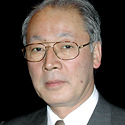

Yoichi Tao
Visiting Professor, Kogakuin University / Senior Advisor, SECOM Co., Ltd. : Japan


Currently, reforms in “mechanisms that move society” = “social systems” are needed, especially in the fields of health/medical care, housing, education, taxes, pension, and welfare. They are administrated by a combination of public services, private-sector services, and NPO/NGO services.
“Social systems” must be “designed with the intent to make them usable by as many people as possible,” which is exactly the philosophy of universal designs.
“Social system designing,” which designs new “social systems,” is not the “designing of objects” but is a “designing of systems.” However, there are many problems, such as the designing methods are not clear, the organization of the design teams is unstable, they are not able to address general issues, and they are not able to evaluate the results.
“Social system designing” must be supported by achievements in all fields of science, and in addition, it requires a comprehensive design team for it is a practical act that involves various organizations, functions, people, and systems of the society.
For “social system designs,” we must accurately and scientifically identify the subjects’ real needs, problems, and reform direction. Then through achievements and findings in the fields of business administration, policy sciences, social sciences, information sciences, and architectural sciences, we have to think of methods to devise new “social system designs.”
Moreover, the spread and speed of communication in today’s network society has a big impact on the formation of the foundation of social systems, and needless to say, such IT technologies will play a major role in the creation of new social systems.
In today’s session, by putting a focus on issues that the aging population in Japan face, such as health/medical care and welfare issues, as well as the refurbishment of housing in the suburbs, we would like to make this a starting point for integrating the methods of health/medical care/welfare system designing and methods of architectural urban renaissance.
For the next decade, this is a big challenge for Japan’s “social systems” that will greatly affect every sector. Furthermore, it is an experience that is required universally all over the world.
